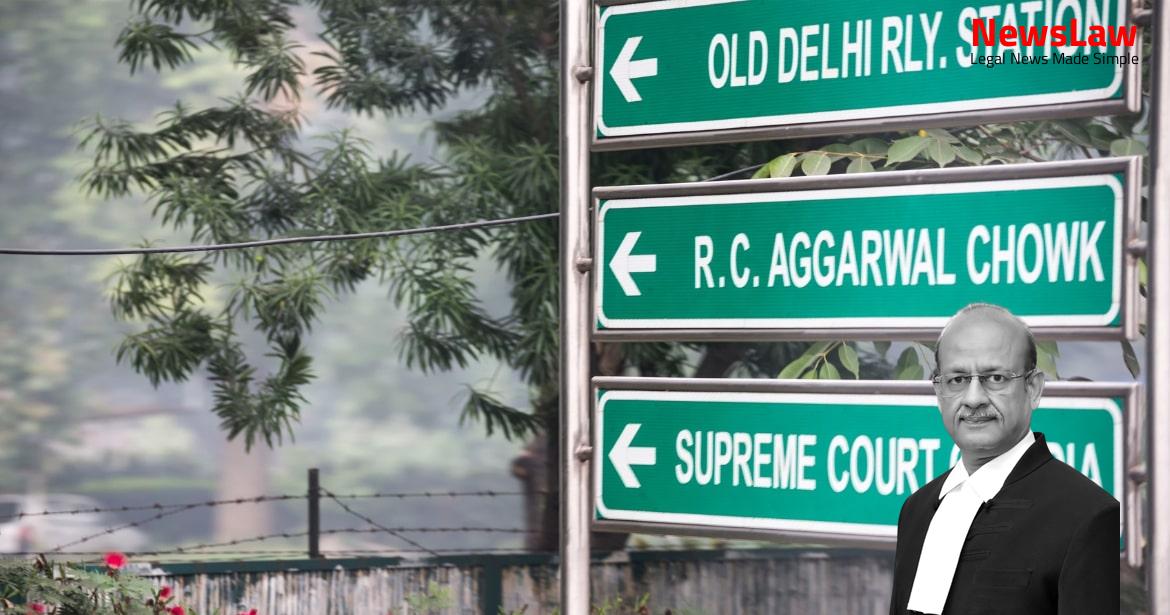Explore the intricate legal analysis undertaken by the court in resolving the employee allocation dispute within the power utilities sector. The court’s meticulous examination of modalities and guidelines set the foundation for the final decisions, ensuring fairness and adherence to established laws and regulations.
Facts
- The One-Man Committee, as per the Concluding Report dated 20.06.2020, allocated a total of 2165 employees, including 1157 previously relieved employees who were working on the side of Telangana due to court orders.
- Out of the 1157 relieved employees, 655 were further relieved by Telangana for allocation to Andhra Pradesh, with the Sub-Committee from Andhra Pradesh deleting some names based on specific directions.
- The Concluding Report was not considered final and open-ended, with ongoing disputes and the need for further directions.
- Various miscellaneous applications were filed post the concluding report by Telangana Power Utilities, employees, and employees’ associations.
- The genesis of the dispute arose from the Andhra Pradesh Reorganisaiton Act, 2014, which led to the formation of Telangana State and subsequent allocation disputes.
- The High Court and later this Court were involved in deciding on the employee allocation between the power utilities of Telangana and Andhra Pradesh.
- One-Man Committee was appointed post the judgment of this Court to distribute personnel between the two states, with reports and modalities formulated at different stages.
- However, there were discrepancies and deviations from the approved modalities by the One-Man Committee in the allocation process.
- Pending issues included unilateral action by Telangana Power Utilities in relieving employees based on nativity, contrary to court orders and modalities.
- The allocation of 584 employees proposed by Andhra Pradesh was beyond the list of 2165 employees identified, leading to further disputes and clarifications.
- The One-Man Committee’s Concluding Report dated 20.06.2020 approved an allocation list submitted by Andhra Pradesh utilities.
- Telangana Power Utilities agreed to accommodate 71 special cases from Andhra Pradesh, including spouses, medical cases, and handicapped employees or their dependents.
- Certain employees, who were directed to be identified by Sub-Committee Members of Andhra Pradesh, were to have their objections considered by the One Man Committee.
- The Concluding Report directed that employees who have attained or will be attaining 58 years of age in 2020 should be kept out of the allocation process.
- The allocation process was finalized based on principles contained in the modalities, taking into account individual needs and service prospects to the extent feasible.
- The Sub-Committee member of Andhra Pradesh was directed to re-examine any left out spouse and medical cases for possible accommodation in the state of their preference.
- All employees finally allocated to a Public Utility were to be paid regular salary from January 2020 along with arrears and benefits attached to their posts.
- The companies in both states were to share/reimburse any salary payments made during the interim period pending finalization of the allocation.
- The entire burden of salary and arrears for each employee was to be on the company to which the employee was finally allocated.
- Employees’ SC/ST cases were to be re-examined to ensure accommodation in the State where they are notified as SCs or STs without impacting their future service growth.
Also Read: Transfer of Writ Petitions for Chartered Accountants’ Tax Audit Guidelines
Arguments
- Telangana State power utilities have been emphasizing nativity over the ratio of employees between Telangana State and Andhra Pradesh, which was rejected by the High Court.
- 1399 employees have been allocated from Andhra Pradesh to Telangana State power utilities.
- The total number of employees in Telangana State power utilities post-allocation is 5115, while in Andhra Pradesh power utilities it was 3552.
- The One-Man Committee was tasked with determining modalities for distributing 1157 employees, as mentioned in a previous court judgment.
- Andhra Pradesh power utilities argue that the One-Man Committee’s report is within the court’s orders and that excessive allocation to Telangana State power utilities affects the promotion prospects of engineers from Andhra Pradesh.
- Claims made by the applicants regarding employee allocation figures were disputed by Andhra Pradesh power utilities as imaginary and misleading.
- Government orders specified a total of 6102 allocable employees, maintaining ratios as per the orders for both states.
- The One-Man Committee prepared a report considering all modalities and population ratios for allocation.
- The distribution of employees from Anantapur and Kurnool Districts of former Andhra Pradesh Central Power Distribution Company Ltd. to Andhra Pradesh Southern Power Distribution Corporation Ltd. was finalized by Government Order No.24.
- Telangana Electricity Engineers Association argued that the One-Man Committee overstepped its mandate in the allocation process.
- Various senior counsels representing different parties presented arguments regarding the allocation process, population ratios, and geographical considerations of both states.
- Applicants who were not included in the Final Report but now included in the Supplementary Report have raised objections.
- Modalities that were earlier finalized have been obliterated in the Supplementary Report.
- Senior most employees relieved from Telangana State power utilities to Andhra Pradesh power utilities were not included in the Supplementary Report and the Concluding Report.
- Contention that the One-Man Committee did not consider the judgment of the Court in Telangana Judges Association Vs. Union of India (2018) in its decision.
Also Read: Interpretation of Wildlife Protection Act: Schedule I Species Identification
Analysis
- The One-Man Committee was constituted to consider the allocation of all allocable employees and was not limited to 1157 employees as contended by Telangana Utilities.
- The list of 655 employees submitted by Telangana State power utilities for allocation to Andhra Pradesh power utilities was approved by the One-Man Committee.
- The remit of the One-Man Committee was not confined to 1157 employees only; it considered all employees to resolve disputes.
- The allocation of employees to the two new States was to be Power Utility-wise in proportion to the posts sanctioned in each Power Utility.
- The employees’ allocation process was to be done based on specific guidelines and formalities established by Government Orders.
- The opportunities given for employees to provide representations were considered by the One-Man Committee in the final allocation decisions.
- The final reports and supplementary reports clarified the allocation process and approved the transfers of employees between states based on modalities and guidelines.
- The decisions of the One-Man Committee were considered final and binding by the parties involved, including the power utility companies and the employees.
- The distribution of employees between Andhra Pradesh and Telangana was based on specific modalities agreed upon.
- Section 82 of the Andhra Pradesh Reorganisation Act, 2014 deals with employees of public sector undertakings.
- The corporate body concerned is responsible for determining how personnel will be distributed between the two successor states.
- The High Court’s judgment dated 02.02.2018 addressed this issue in paragraph 51.
- The fact that the names of the applicants were not included in the Final List dated 26.12.2019 does not affect their subsequent inclusion for allocation.
- The argument of the learned counsel for the applicants regarding the exclusion of their names does not undermine their allocation later on.
Also Read: Privacy Rights Violation in Affixing Covid-19 Posters
Decision
- The One-Man Committee’s Concluding Report dated 20.06.2020 is upheld and all objections to it are found to be without merit.
- The power utilities of both States are obligated to implement the directions of the One-Man Committee Report.
- Allocable employees have the liberty to submit options as per the prescribed form in the modalities.
- Employees can adjudicate their claims before the appropriate forum in accordance with the law.
- Representations submitted by applicants will be shared with power utilities of both States for their response.
- Final modalities were finalized by the One-Man Committee on 17.04.2019, including the allocation of employees.
- The effective/appointed date for transfer of business is stated as 02.06.2014 from Andhra Pradesh to Telangana State utilities.
- Challenges to the allocation made by the One-Man Committee are not entertainable, as the process has been finalized.
- Claims regarding salary or allowances raised in other M.A.s need not be considered in these proceedings.
- Employees of power utilities are free to pursue any additional claims not related to the allocation process.
Case Title: TELANGANA POWER GENERATION CORPORATION LTD (TSGENCO) Vs. ANDHRA PRADESH POWER GENERATION CORPORATION LTD (2020 INSC 680)
Case Number: MA-001270 / 2020



